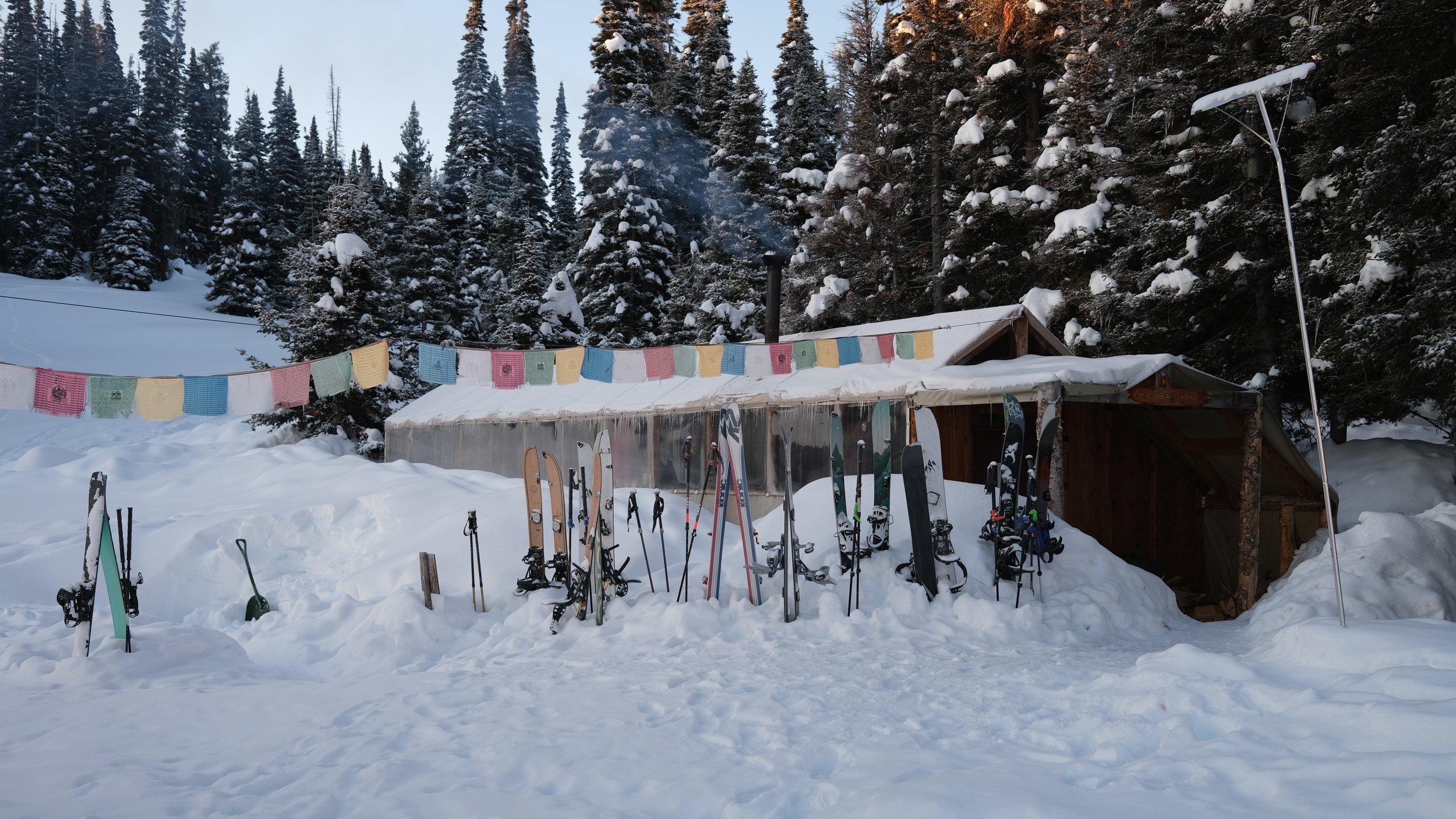
Since both of us moved away from Southern California, Sean and I regularly catch up over the phone. He was my nature buddy when we lived in Los Angeles, and I’ve always had a hard time saying ‘no’ to his proposals to get outside
“We’re heading to Tornak Hut – outside of Sun Valley. There’s a great group of us, mellow terrain. Party at the moon tower, you should come!
I said I’d think about it…
At that point, I had only just resumed snowboarding at resorts after a 10-year hiatus. I grew up riding the resorts around Tahoe, but dropped the hobby after moving down to Southern California for college. There, ocean activities – spearfishing, scuba diving, and surfing, especially – filled the void. Since I now lived in Half Moon Bay, snowboarding was again feasible.
Still, my interest in the backcountry was budding. Like most new to it, I had my eyes opened by various videos and clips sent my way (a chess move of Sean’s, no doubt). Videos showing people absolutely getting after it: untouched snow, no one around, no chairlifts to be seen. It really grabbed the attention of a 30-something year old dude-bro of my ilk. And – damn it, resort riding is expensive and full of people!
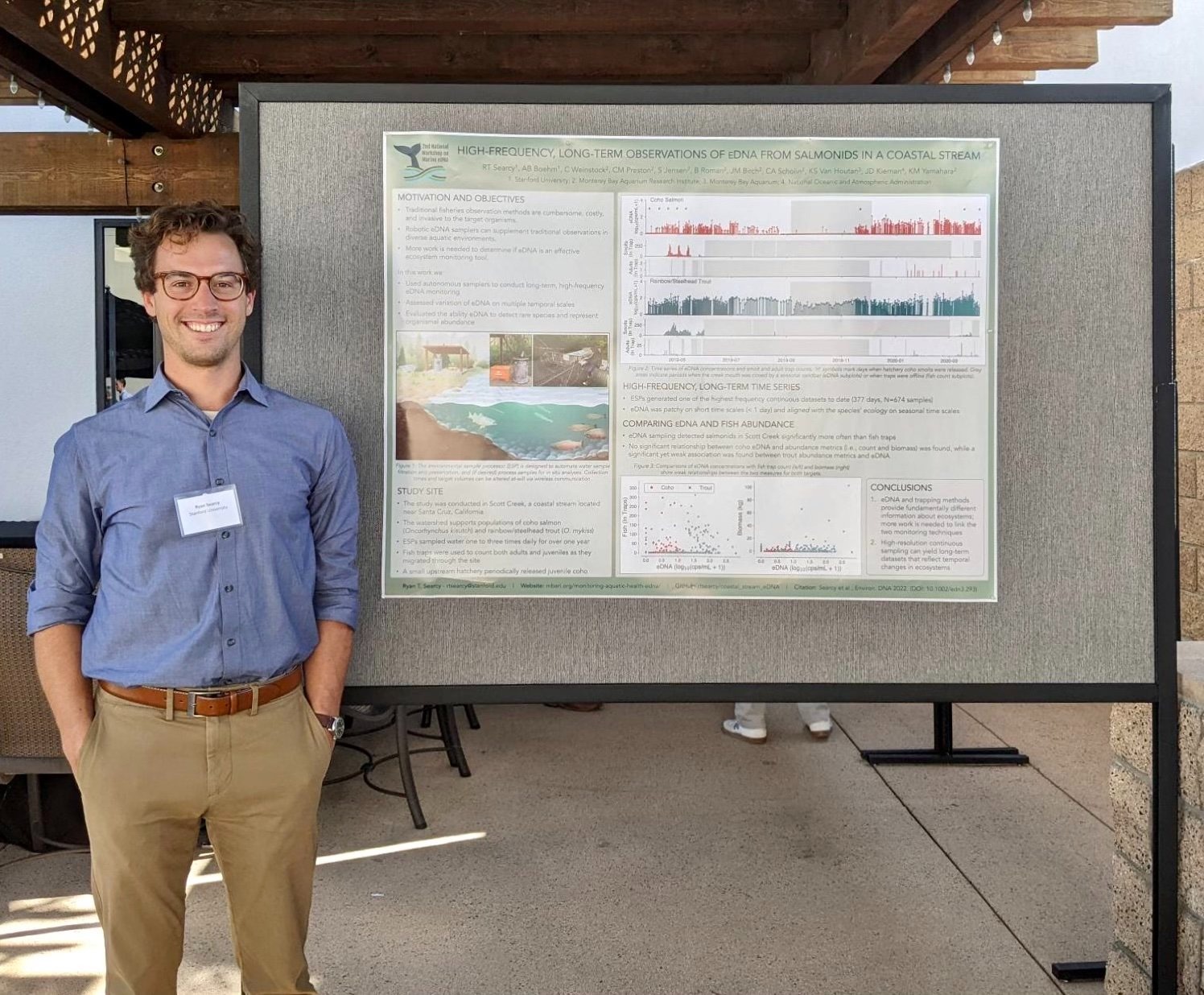
And – damn it some more – I could use a good trip. I would be finishing my PhD around then, and the trip would be a way to decompress and figure out my life. Nature has always been my remedy for the ailments of adulthood, the mechanism of treatment being the occupation of unbounded space, embracing uncertainty, and pushing oneself. As my fellow hut tripper Matt later put it: “experiencing good stress.” Surfing large, unruly Central Californian waves and backpacking in the Sierra had been doing it for me up until that point, so perhaps a backcountry hut trip could be similar.
I bought my flight.
My spot on the hut trip secured, I had six weeks to prepare and attempt to alleviate the practical concerns I had about the trip. Concerns like: “what gear will I need,” “would my fitness and lack of experience hold anyone back,” and – chief among these – “how big of a deal are avalanches, really”?
Here, I benefited from friends’ experiences in the backcountry and found myself badgering them frequently for advice and reassurance that this trip was right-sized for a first-timer. A well-refined packing list was provided early on, but the slim list of items highlighted to me that one should try their best to maximize function and minimize the quantity of items in their pack. Thankfully, the hut would have cooking gear and a mattress pad, so I’d only be on the hook for a pack, a strategic array of clothes, a sleeping bag, avalanche safety gear, and my share of the group’s food.
And – my splitboard. I’m not being hyperbolic when I say that my jaw dropped when I first saw a clip of a backcountry snowboarder breaking their board in half in order to work their way back uphill. A splitboard would decidedly be my mode of transportation to, from, and around Tornak Hut, but accessing one and subsequently learning how to use it were less apparent. Once again, I had the good fortune of an experienced and similarly-sized friend. I’d borrow Sean’s old splitboard, helping alleviate the cost of what I was learning is not the cheapest activity to get into.
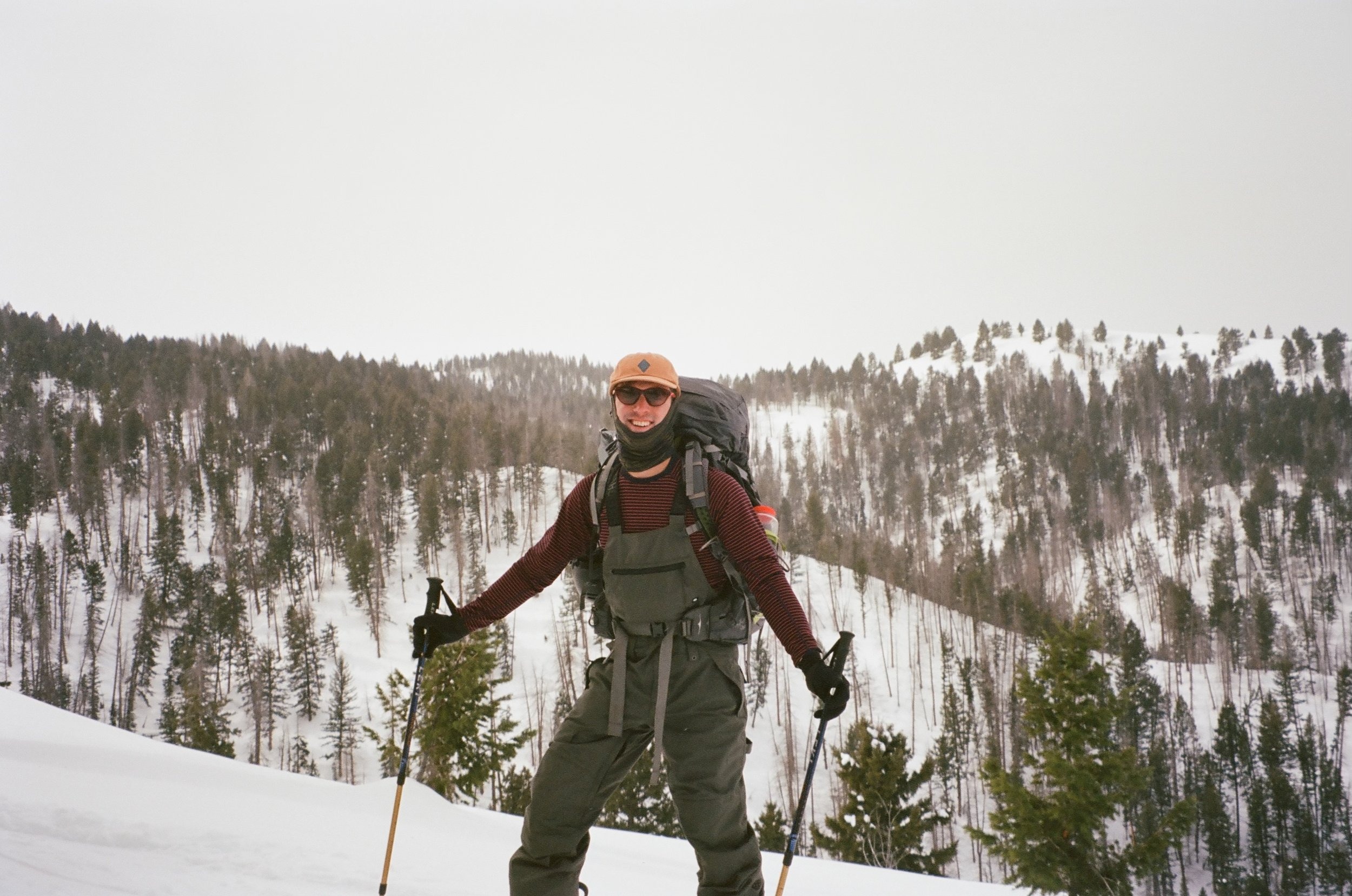
I was on my own for getting in touring shape and learning some basic backcountry skills ahead of time. Surfing being my primary form of exercise, I was ready to paddle my way out of any situation on the mountain. My legs, though, were in serious need of a tuneup. Advice from another friend led me to understand that leg strength and flexibility (particularly in the IT band) were crucial to survive multiple days of touring. I have to admit: the way I got my lower body into shape was long, sweaty hours on a stair stepper. What would compensate for my lack of backcountry hours, I convinced myself, were buns of steel.
As the trip approached, it became clear: safety is integral to the culture and practice of being in the backcountry. Between specialized gear, backcountry travel technique, and avalanche forecasts, you need to understand how to assess and mitigate risk any time you step into the backcountry. With my anxiety growing around this topic, I signed up for an Introduction to the Backcountry course out of Truckee the weekend prior to the trip.
The class, albeit not a comprehensive avalanche safety course, got me comfortable with the basics: using digital mapping tools to plan touring routes and circumvent troubling terrain, checking the local avalanche center forecasts, looking for signs of danger when out touring, and operating a beacon as an effective member of a rescue should it occur. It also involved a half-day tour up an easy route, providing a sampler of practical splitboarding skills like conservative downhill riding technique, transitions, and proper form while in tour mode.
I remember having a perverse thought as my plane began its descent and I got my first view of the Sawtooth Mountains and the white remoteness that blanketed them: ‘Wow – there’s probably no other way to get out there except for a plane crash.’ I was the first of the group to arrive in Hailey. As I waited, I counted a couple dozen avalanche crowns on the nearby mountains – a result from the most recent avalanche cycle. I resisted the urge to stare, partially to quell my anxiety, but mostly because it was absolutely blinding. The weather was gorgeous and I’d failed to bring sunglasses. I made a note to grab a cheap pair somewhere before the next day’s departure and began meeting my team as they arrived on later flights in the meantime.
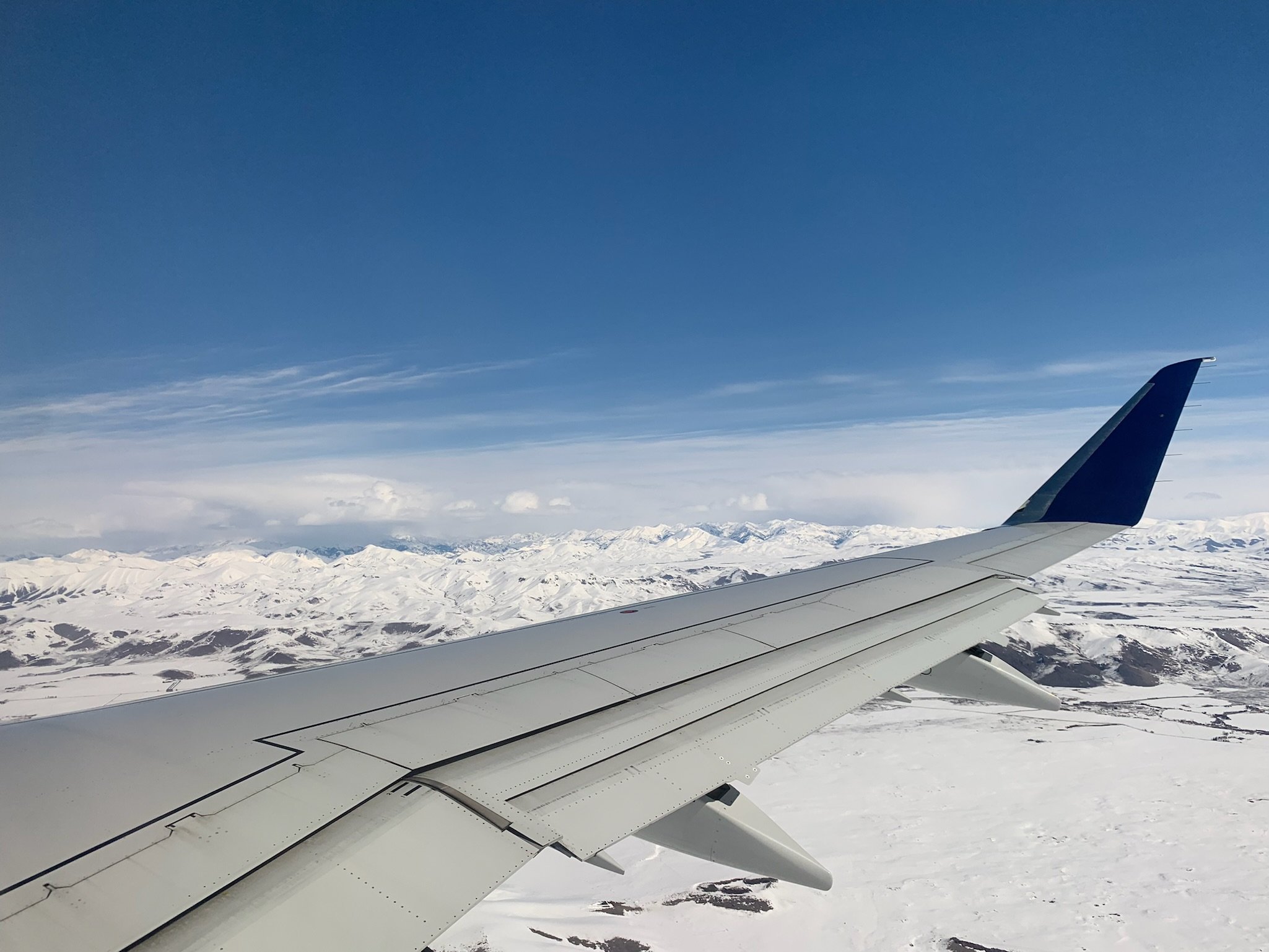
Of the nine others on the trip, I knew three; but, how would folks with more hours and skill in the backcountry welcome a newcomer? As it turned out, everyone was pumped upon arrival. The trip seemed to be a reunion of sorts for most of the group, and conditions promised a really fun time on top of that. Plenty of friendliness gave me the sense that everyone was stoked for me and the experience to come. We headed into town to take care of last minute to-dos and gear checks and to enjoy a huge, wine-filled meal.
The hut trip was officially underway.
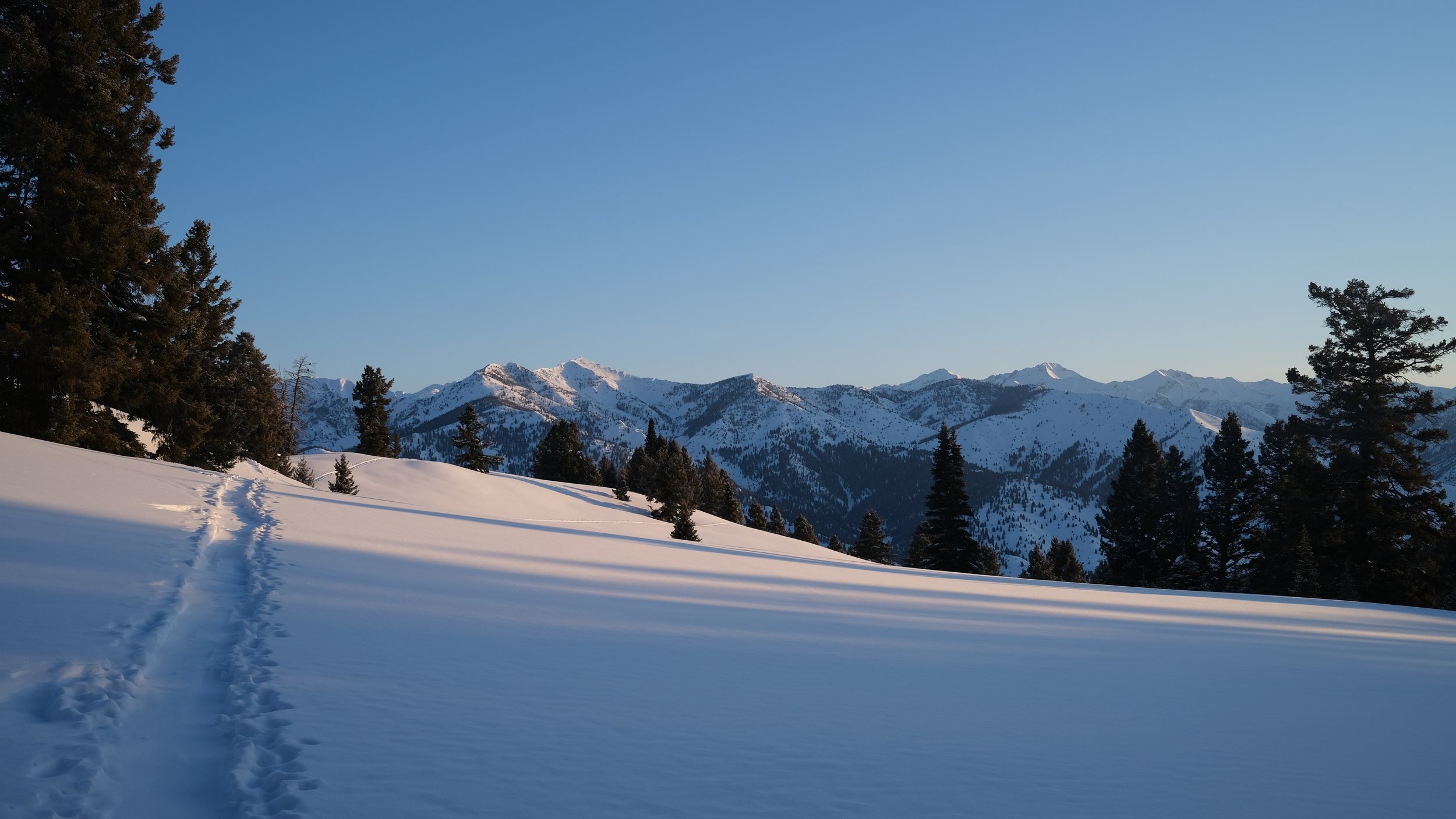
Our tour to Tornak Hut (8,500’) would take us 3.5 miles and 1,800 feet up from the cars. We were lucky to have the help of the Sun Valley Trekking guides. One (the true hero) took all our beer in his pack and split for the hut; the other stayed with us as the trail lead.
A few specific moments from the tour up stand out to me, mostly because they helped disarm some of the residual worries I had as a first-timer and brought me into the moment. I remember giving myself a mental high-five for the hours spent strengthening my tush on the stair stepper. They were paying off, and I didn’t have any trouble keeping up with the group despite being strapped to a 40lb pack. The Intro to Backcountry class also turned out to be a great investment, and I felt confident with my strides and kick turns the whole way up. About halfway to the hut, we intersected the exiting group as they were making their way down. Like us, smiles ran across their faces. They wished us a fun time as they zoomed by, robed in Hawaiian shirts, guitars and bags of trash strapped to their chests. We’d need to be safe, of course, but this trip was also about having fun.
What brought me into it more than anything, though, were my first panoramic views of the snowy landscapes we’d get to navigate and play around on in the coming days. It was almost difficult to grasp, as my whole concept of skiing and snowboarding had been tethered to vistas that included ski lifts and roads and hundreds of people. What we were getting into would take time for me to fully understand and appreciate, but these glimpses combined with the motivated feeling from working hard while in nature and the expectant hoots and giggles of my team let me know it was going to be good.
We arrived at Tornak Hut a little after midday. The parachute-walled hut was tucked under a grove of conifers and situated on a knuckle with excellent views of some of the terrain we’d be riding. Arrival felt good, and I consider dropping one’s pack and kicking off one’s boots after a vigorous hike as one of life’s greatest pleasures – this felt the same. Our porter had already opened up the hut, a fire began to warm it and snow was melting into drinking water. As we stripped off our gear and piled in, I knew it was time to make a crucial decision. I was no stranger to staying in cabins with party animals, and I knew that where you decide to lay your cap and make up your bed can absolutely determine your happiness for the entire trip. On the tip from my guide the week before, I chose the bed farthest away from the hut’s woodfire stove. I sleep warm in general, and I didn’t want to be kept up sweating by being too close to a ripping fire. But – that was a big mistake. The stove was kept on low each night, so I froze my ass off in my ultralight sleeping bag and subsequently slept like shit each night. A humble reminder to accept pro tips with a bit of discernment.
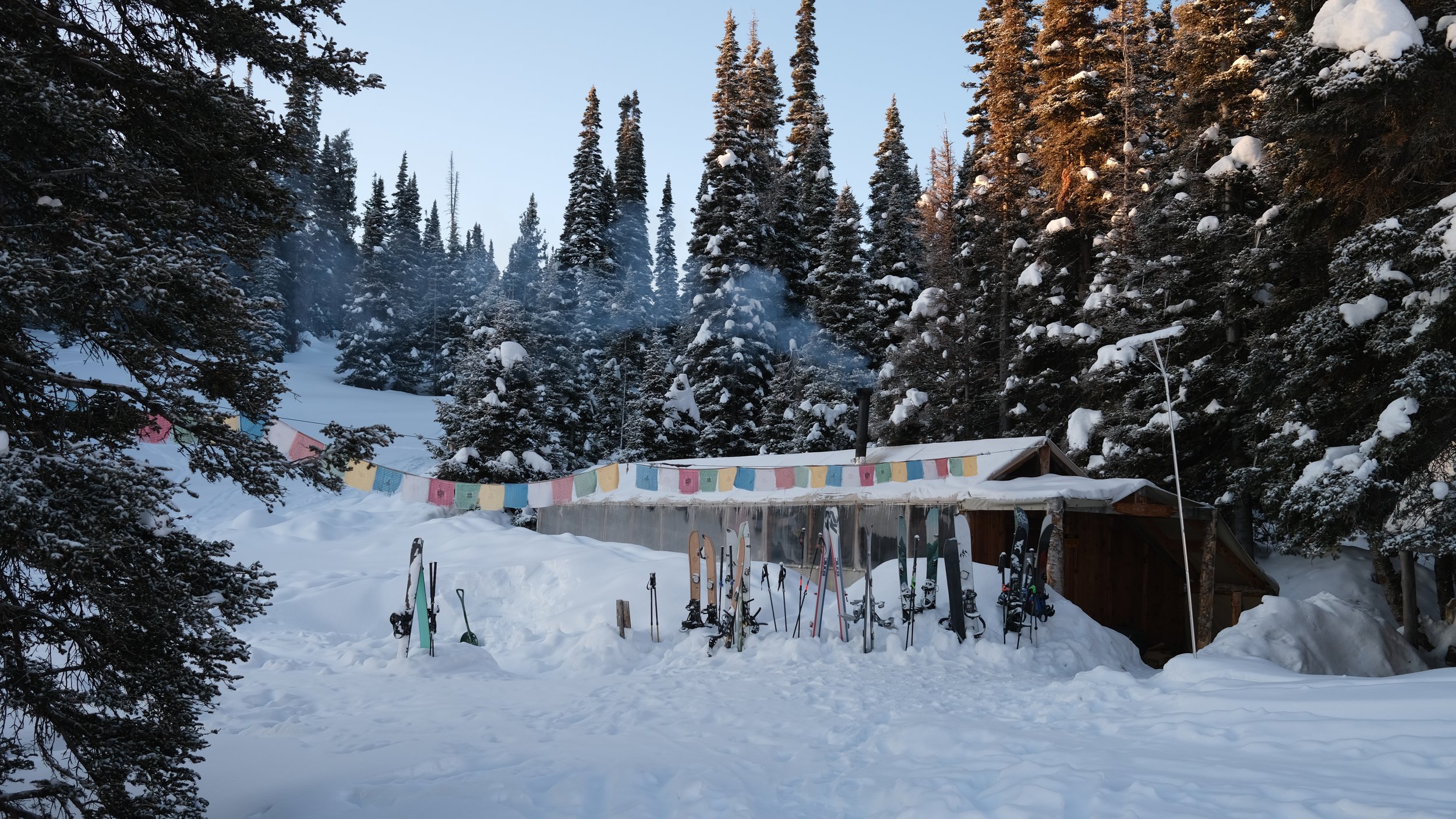
Aside from sleep, hut living proved to be a big joy of the trip. The common space in Tornak Hut is adjacent to the kitchen and this facilitated the eternal socializing and grazing that occurred throughout our four-day stay. Meal prep was led each night by a group of two or three, and I appreciated this system because it meant that you only had one night of work to do in the kitchen, leaving the remaining nights to relax and enjoy the cooking of others. Food prepared for you by others always seems to taste better than making it yourself.
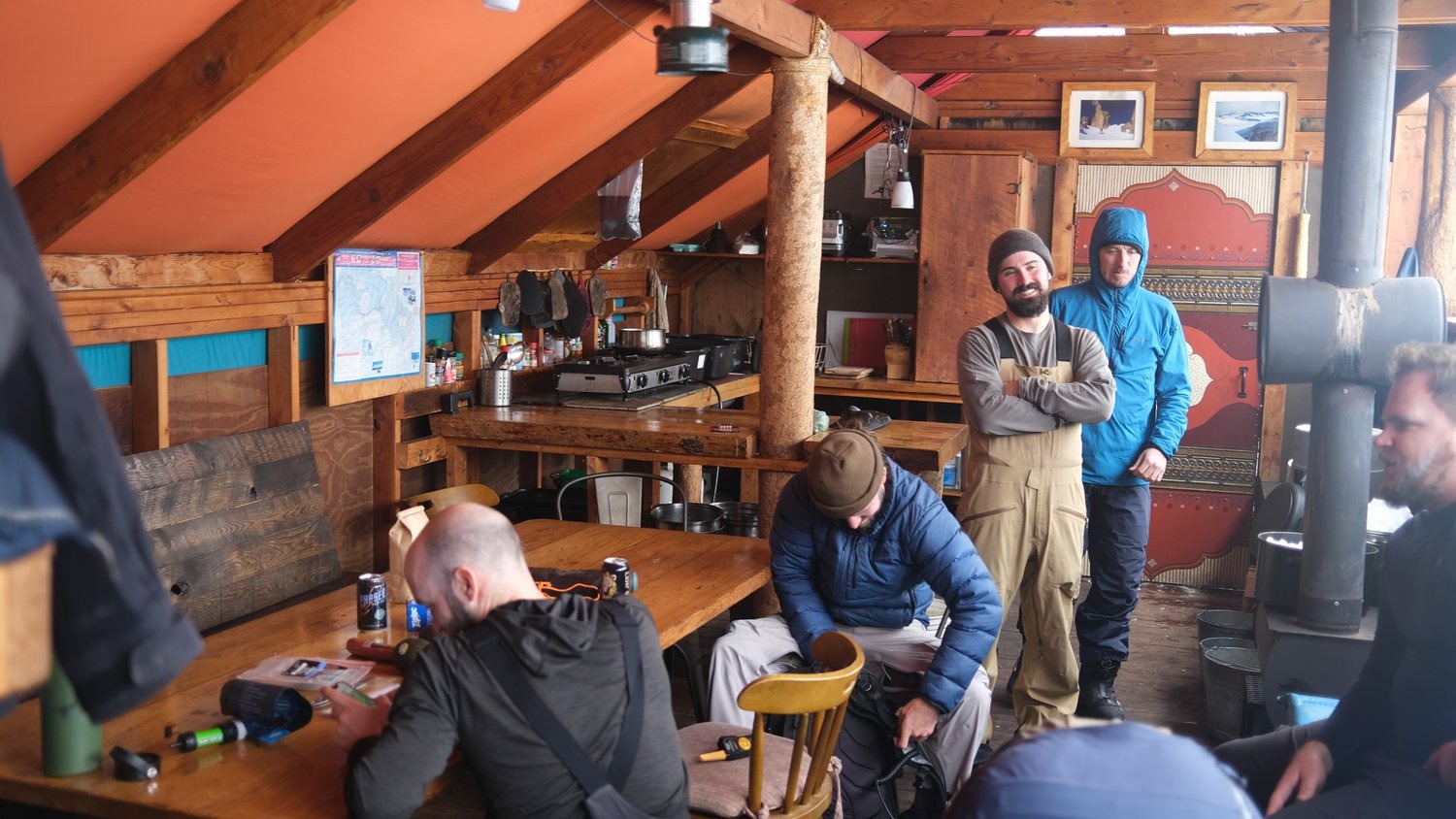
Folks were also generous in sharing their goodies with others. My favorite treat of the trip: Erin and Tim brought materials for Old Fashioneds. Treats like these are delicious in normal life, but they’re downright heavenly after working hard outside all day. Equally essential for morale was coffee, and I made it a point to keep the pot full as much as I could.
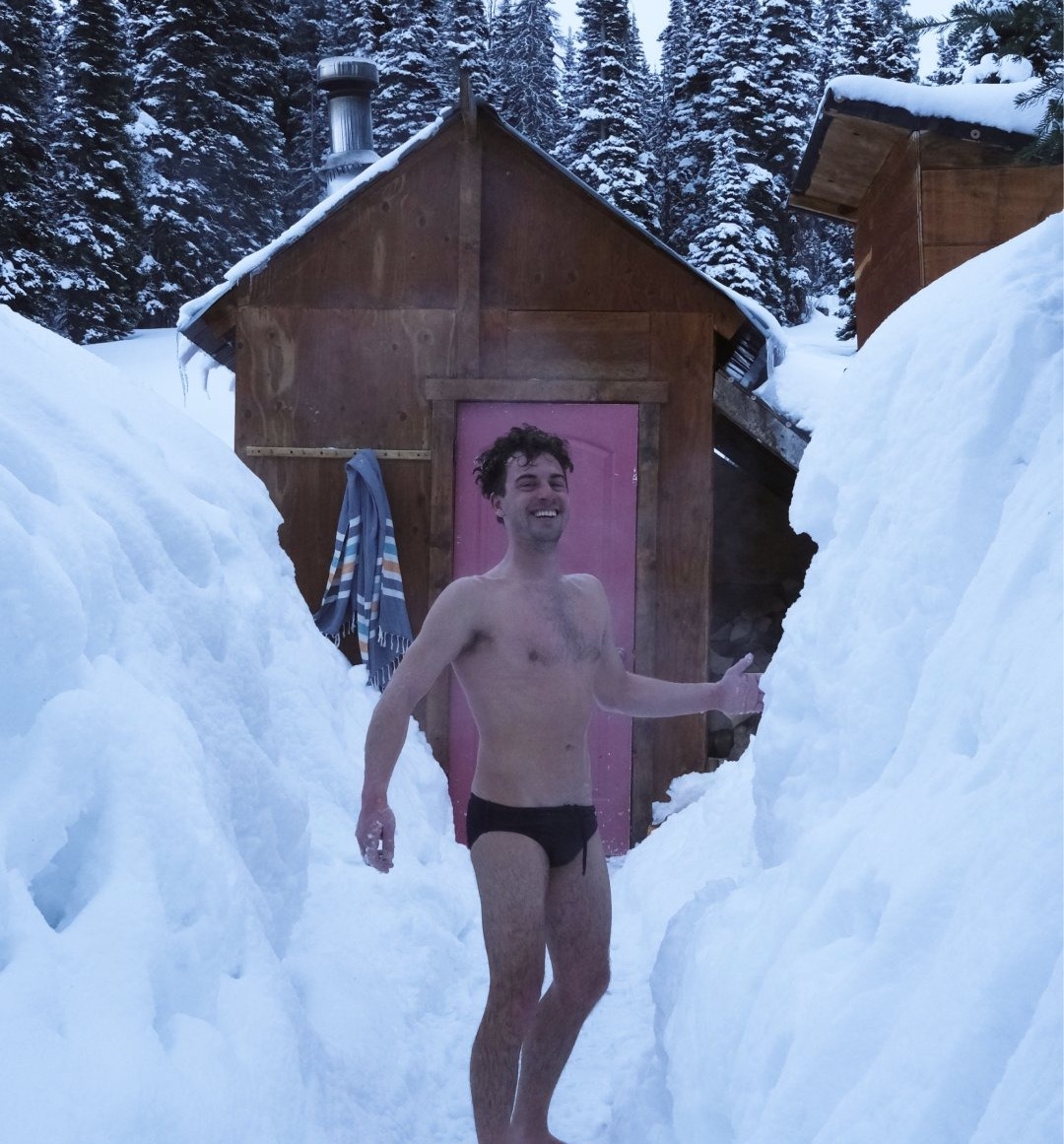
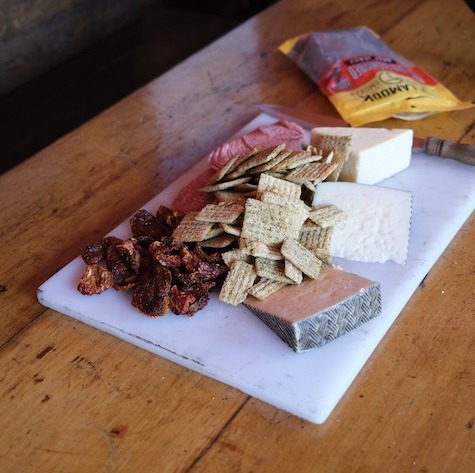
A large percentage of our time on the trip was spent in the hut. I highlight this because I found it equally as impactful as being outside touring. I spent that hut downtime stretching, sitting in the shed of a sauna, and doing other self-care activities. I wrote more pages in my journal than I had in the previous year. I read all of the late-2000s ski magazines left lying on the dusty bookshelves of the hut. I chopped wood. It was so nice being offline, disconnected from my phone and compelled to be “unproductive.”
My first drop came after we finished settling into the hut on the day of arrival. Everyone was ready to get moving and get some riding under their belts, so we made a quick tour to the edge of the knuckle, still within eyesight of the hut. We partnered up and, being the benefactor of his old splitboard, I went with Sean. After letting everyone else go, we scooted into the fall line, a light snowfall lowering visibility until we came into the protection of the trees. I remember riding very conservatively hooting on my way down – both out of joy and to check in with my buddy along the way. We met up again moments later where the rest of the group had stopped near a dropoff. Like all of the runs to come, this one ended too soon. But it was a good, powdery appetizer nonetheless.
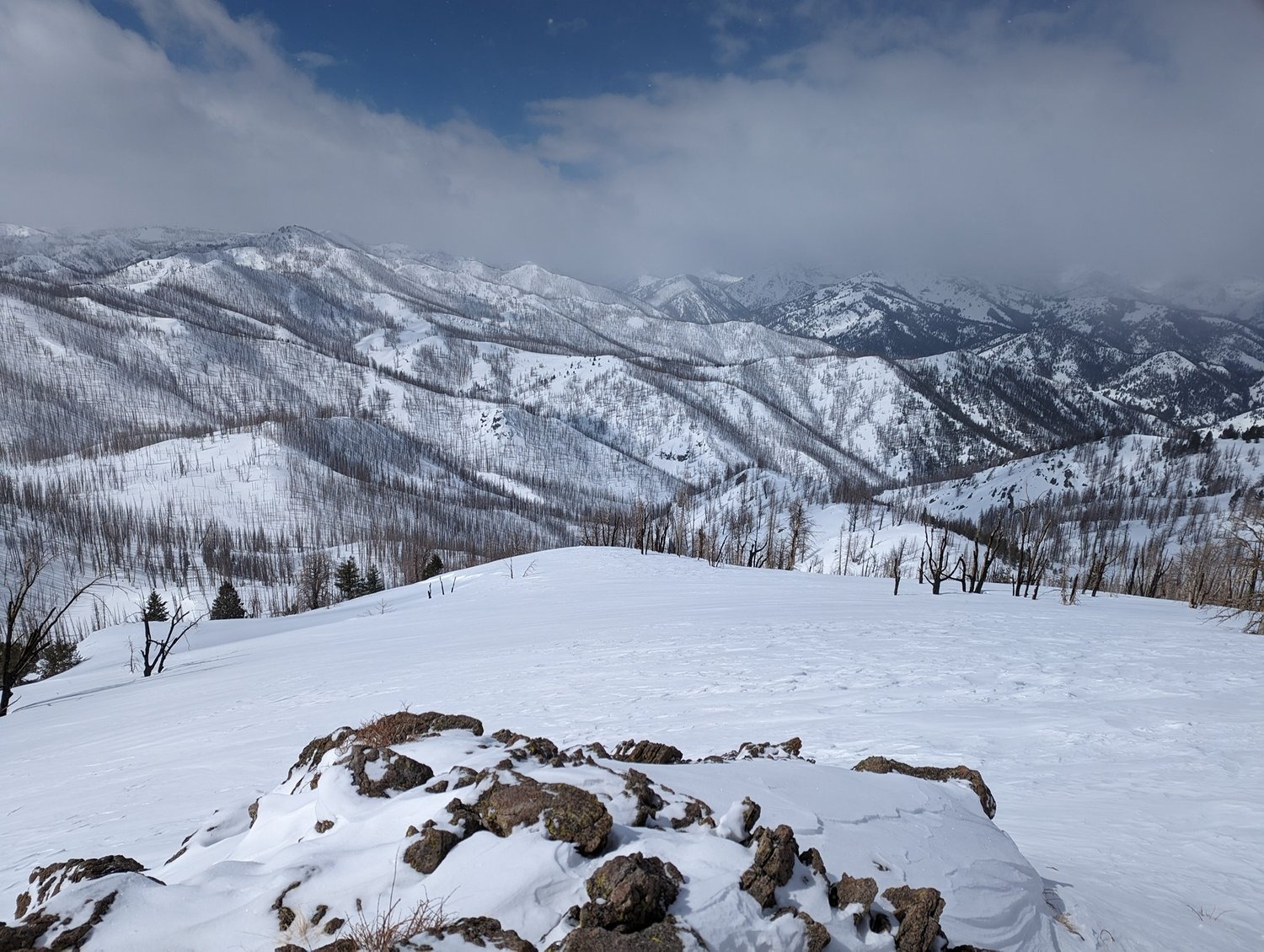
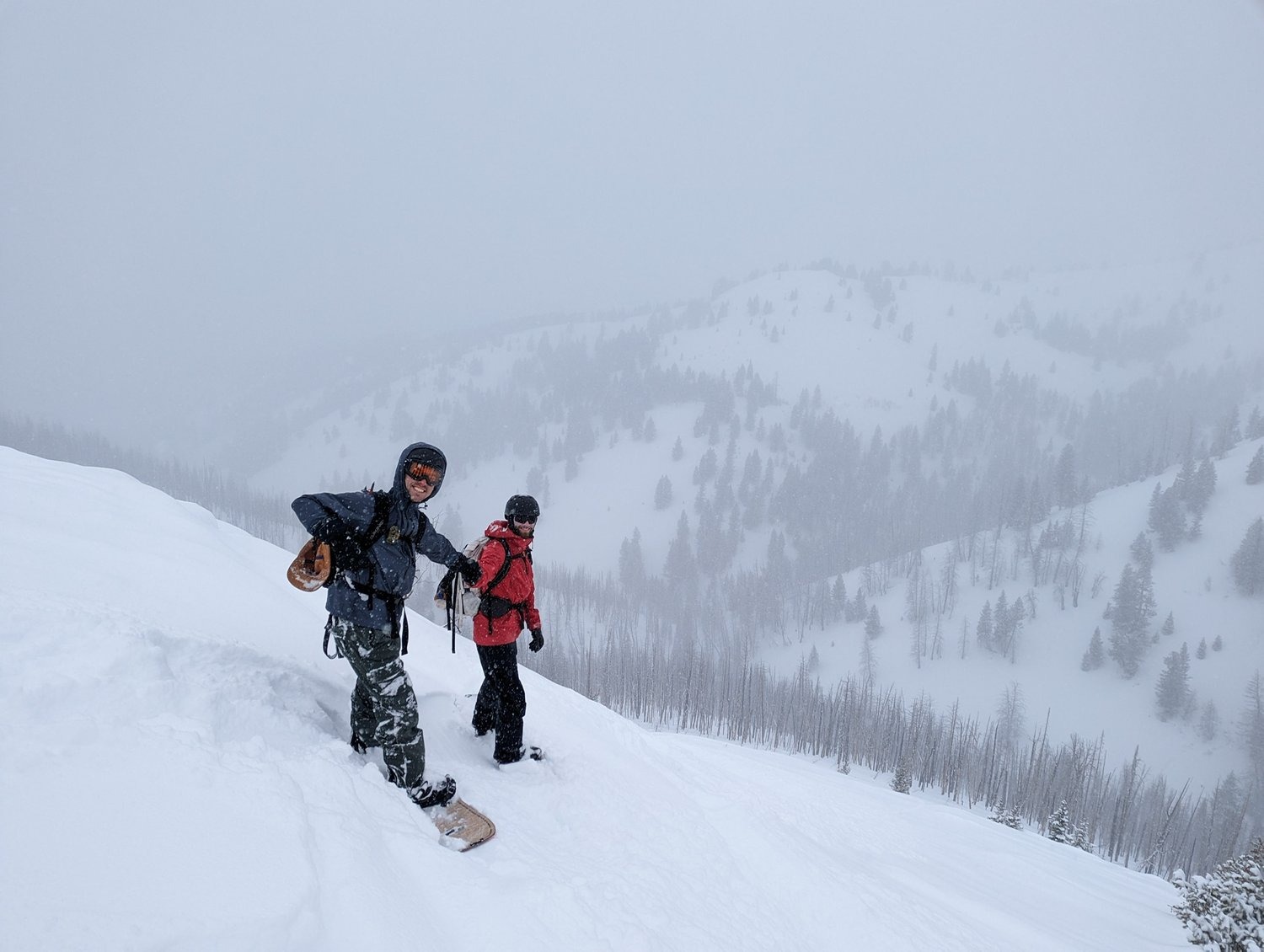
The Mountain West had been absolutely dumped on that winter, and the timing of our trip couldn’t have been better. Avalanche conditions had mostly settled down the week prior, and we were left with a huge swath of terrain covered in fresh snow to adventure on. It was fun helping plan our lines, standing on top of ridges and looking out at others to determine the best (and safest) route through the huge playground we had to ourselves. In this way, backcountry touring and riding remind me a lot of scuba diving – you spot something fun and interesting in the distance, and then move over to it in three dimensions.
This multidimensional freedom was the thing I enjoyed most during my time in the backcountry. The riding I knew I’d like, but I hadn’t expected to enjoy being in tour mode as much as I did. The predictable challenges all showed up: my legs were beat after a few days, heat and moisture control were a never-ending battle, and at one point the skins I was borrowing had to be triple ski-strapped for any uphill progress to be made. But, these really didn’t bother me deeply. Instead, I found it a time to be both with my thoughts internally and extremely connected with nature externally. I felt immense appreciation that one could still have an experience like this, that spaces like this still exist.
We had a great four days at Tornak Hut, with few sketchy situations and no major breakdowns. Bittersweet is how I’d describe our departure and the run down to the cars, but it was going to be nice to have a shower and some fresh vegetables, for sure. I remember our final meal as a group was enjoyed in near silence – everyone was content in that washed-out state of exhaustion that comes after working hard. I love that feeling, and I’m really happy to have hut trips as another way to get there.
Embrace the buddy system.
This is not an activity that you easily get into by yourself. Thankfully, the backcountry community is more than happy to lend its experience and share the stoke, get you geared up, and encourage avalanche education.
Take a course.
Video tutorials are a great start, but they’re no replacement for the real thing. Get out there under the supervision of a pro and dial in your skills. Preferably, you’d do this via an Intro to Backcountry or a certified AIARE 1 course. My confidence during the hut trip was definitely boosted as a result of my coursework, and I’m looking forward to taking a formal AIARE course this season.
Practice your transitions.
Do this many times before your trip. Get good at transitions with your specific system and your time on the mountains will be a lot less stressful. There are a lot of steps one can forget when transitioning, leading to subpar rides, a waste of energy, or even potential gear failures.
Dial in your layering system.
Anyone spending more than a couple days outdoors knows this, but it’s especially important in a winter backcountry context. You need to be ready to be cold then hot, dry then wet. Invest in a few good layers to rotate throughout your tours.
Dial in your sleeping system.
Light sleeper? Bring an eye mask and ear plugs. Good sleep is crucial in order to be primed for long days touring but hard to come by in a well-occupied hut.
Bring some tasty treats.
Pack enough to share with your crew. Spirits can waver due to a number of factors, but a strategically placed goodie can instantly improve morale. Some ideas: pocket bacon, chocolate-covered espresso beans, some fresh dates, or pack up various components of a charcuterie board if you’re feeling fancy. Treats don’t have to be food-based, too. Portable massage guns, electrolyte packets, aromatics for the sauna, or a speaker to play tunes can make hut time more enjoyable.
Hut Tripper aims to be the go-to hub for backcountry hut exploration, crowd-sourced beta, and trip planning resources geared toward winter backcountry travelers. We're backcountry enthusiasts, ourselves, combining our love for alpine skiing, the wilderness, and adventure.
We exist to empower new & existing backcountry travelers to explore the mountains in a responsible and informed way, consolidating winter backcountry accommodations as far east as the Rockies and detailing each with an ever-evolving list of hut details and beta.
